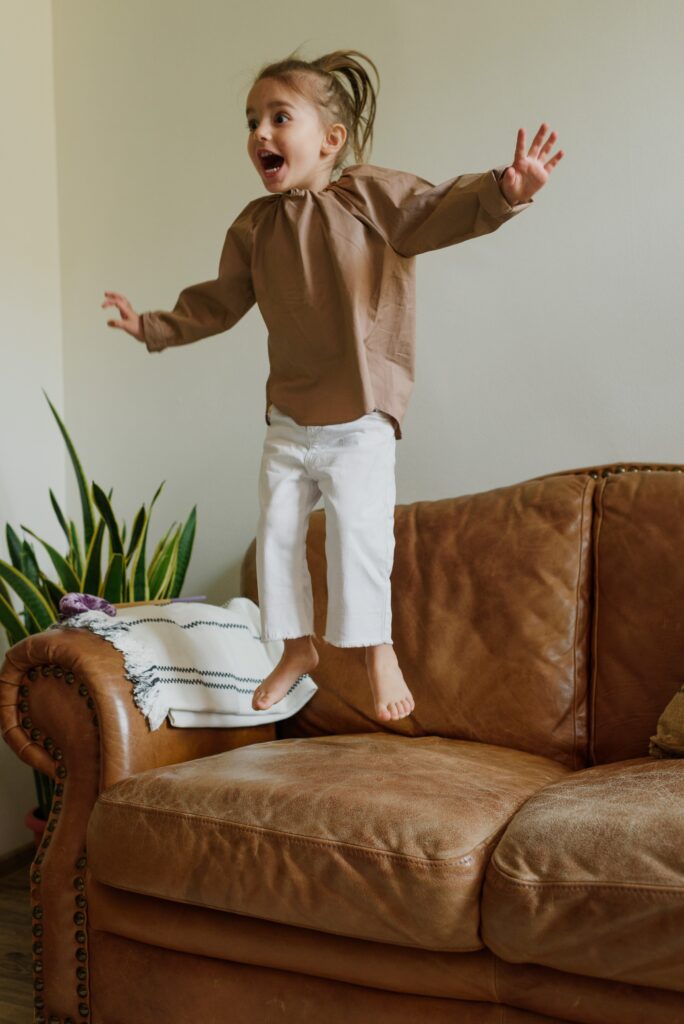If you have a hyperactive autistic child then you are not on your own. Many parents find themselves in a similar position.
Hyperactivity and autism
As parents of an autistic child, you may have observed certain behaviours that differ from those of other children.
One common trait that some autistic children exhibit is hyperactivity.
While it can be overwhelming and challenging to navigate, it’s essential to approach this behaviour with patience and support.
In this article, we aim to shed light on why some autistic children may be hyperactive and provide practical strategies to support your child.
Understanding hyperactivity
Hyperactivity is generally characterised by excessive movement, restlessness, and difficulty staying focused or seated.
In autistic children, hyperactivity often stems from neurological differences that affect how they process sensory information and regulate their emotions.
It’s important to note that your child’s hyperactivity is not due to a lack of discipline but is likely a result of their individual neurodiversity.
Why may an autistic child be hyperactive?
Every child is unique and their hyperactivity may be down to factors specific to themselves.
With that said however, the below are some common issues to consider.
Sensory factors
Autistic kids may struggle to filter sensory information, leading to heightened sensitivity to sounds, lights and textures.
This sensory overload can trigger hyperactive responses as they try to cope with the overwhelming environment.
Regulation of emotions
Another possible explanation for hyperactivity in children with autism is that it may be a manifestation of their difficulty with regulation of their own emotions and behaviours.
Children with autism may have difficulty understanding and interpreting social cues, which can lead to frustration and difficulty in managing their emotions.
This can result in hyperactive behaviours such as fidgeting, constant movement, and difficulty sitting still.
Communication struggles
It is well known that many autistic children struggle with communication.
Difficulty in expressing needs or emotions verbally can cause frustration and agitation in autistic children.
This can wind up leading to hyperactive behaviours as a way to release tension.

Other conditions
It is also possible that hyperactivity in children with autism may be due to co-occurring conditions such as attention deficit hyperactivity disorder (ADHD).
ADHD is a separate condition characterised by symptoms such as impulsivity, inattention, and hyperactivity.
It is not uncommon for children with autism to also have symptoms of ADHD.
What can parents do?
Whatever you try to address the hyperactivity, you will need lots of patience. However armed with this and some of the below methods you may be able to help keep your child calm.
Create a safe space
Designate a quiet and organised space at home where your child can retreat to when feeling overwhelmed.
This space can serve as a safe haven to recharge and regulate emotions.
Many parents have had success with tools like indoor tents for this purpose.
You could also provide ear defenders to help them block out unwanted noise.
Provide sensory alternative
Provide sensory-rich activities that can help your child redirect their hyperactivity in a positive way.
This might include using fidget toys, sensory bins, or engaging in physical activities like jumping on a trampoline.
It can be helpful to have an almost emergency stash of sensory toys to use if your child is becoming hyperactive.
Provide physical outlet
Allow your child to engage in physical activities that can help release excess energy in a controlled environment.
These will of course be dependent on your child’s interests but may include sports, dance, or martial arts.
Embrace routine
Structure and predictability can be comforting for autistic children. Establish daily routines, and communicate any changes in advance to reduce anxiety and hyperactivity.
Provide praise
Praise and reward your child for practicing self-regulation and displaying calm behaviour.
Positive reinforcement can be a powerful motivator for continued progress.
Summary – Hyperactive autistic child?
It is important to note that hyperactivity is not a symptom that is unique to autism or to children with autism.
Hyperactivity can be present in a variety of developmental and behavioural disorders, and it is not a specific indicator of autism.
Whilst hyperactivity is not a core symptom of autism an autistic child may display hyperactive behaviours.
Hyperactivity may be a manifestation of the child’s difficulty in regulating their own emotions and behaviours, difficulty with processing sensory information, or a result of co-occurring conditions such as ADHD.
It is important for parents and caregivers of children with autism to work closely with a multidisciplinary team of professionals to help.
This could include a developmental paediatrician or a child neurologist, to determine the best course of treatment and support for their child.
Feel free to browse our archive for more articles on raising an autistic child. Or alternatively you can visit the American Autism Association’s site.

